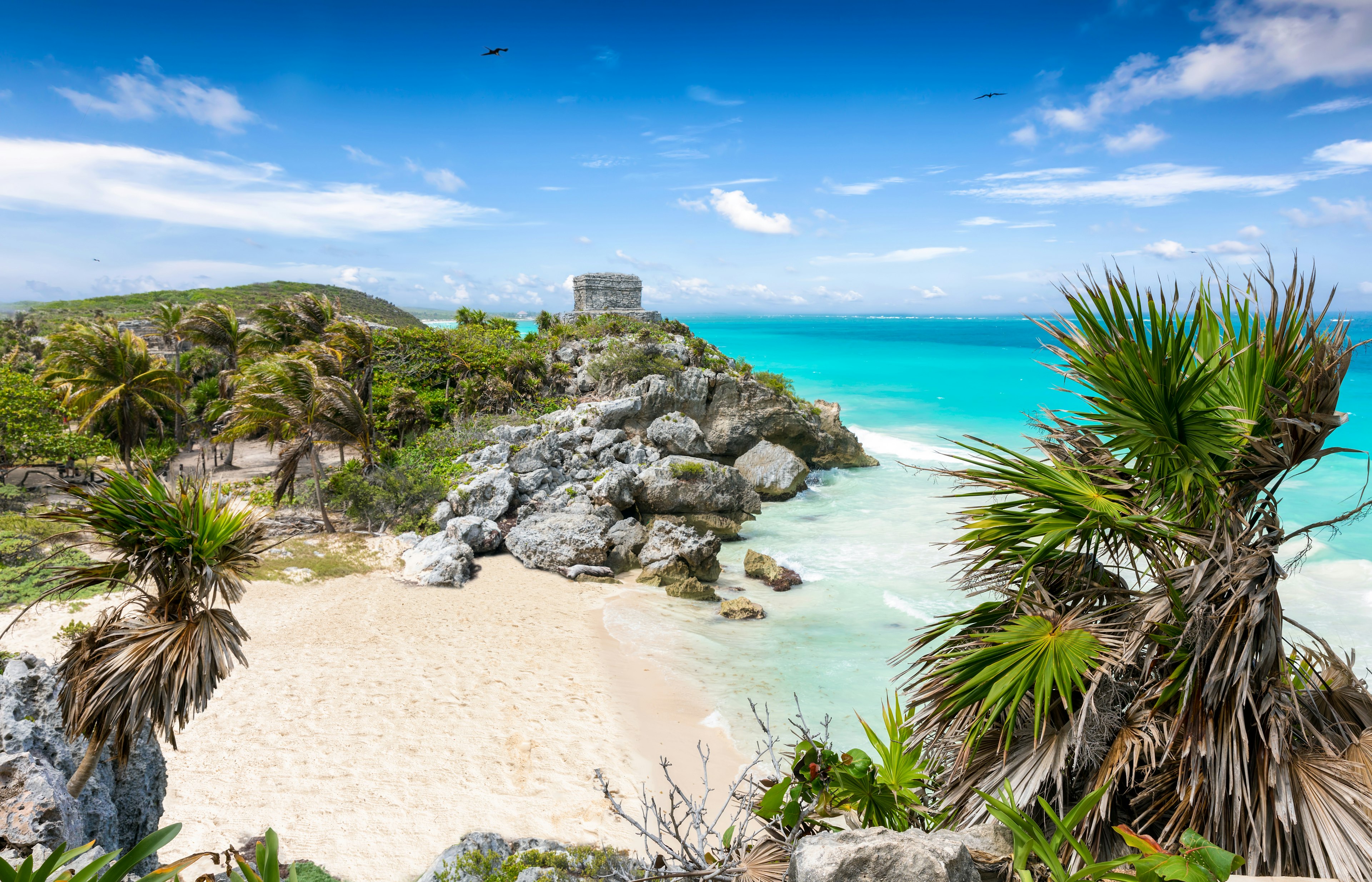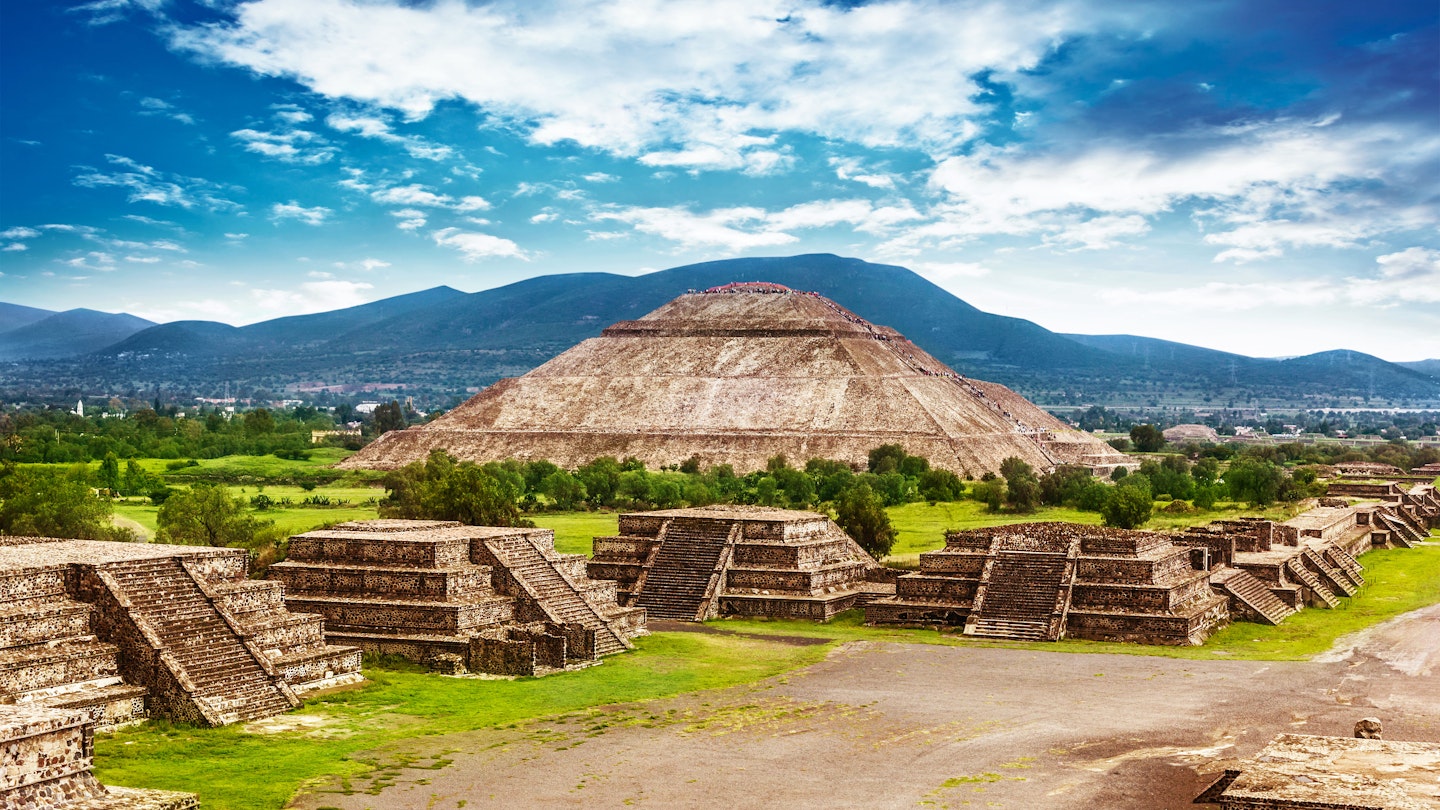Reopening of Mexico’s Archaeological Sites: Teotihuacan and Tulum Welcoming Visitors Again
From the pyramids of Teotihuacan to the Mayan ruins of Tulum, Mexico’s renowned archaeological sites are starting to reopen. However, visiting these historical treasures now involves adhering to a new set of rules as they evolve for a post-pandemic era.
The Partial Reopening of Teotihuacan
On Thursday, Teotihuacan, home to some of the world’s largest pyramids, partially reopened its archaeological attractions more than five months after closing its doors. Consequently, tourists have begun to return to the site north of Mexico City, patiently queuing for limited tickets to walk along the Calzada de los Muertos (Avenue of the Dead), the only accessible area at this time. The three main pyramids and the museums showcasing painting and culture remain closed for the moment.
Under new health and safety guidelines, Teotihuacan is operating at a limited capacity of 30%, allowing a maximum of 3,000 visitors per day. Moreover, visitors must undergo temperature checks and wear masks throughout their visit.

Impact on Local Economy
The reopening of Teotihuacan is significant for the local economy, allowing over 200 tourist guides, 700 vendors, and 3,000 artisans to return to work. Moreover, Evelyn Osornio, Mexico’s tourism secretary, emphasized the importance of collaboration from visitors to ensure a safe recovery of tourism.
“Today we are inviting two forces to unite across the country: culture and tourism. We aim to recover safely and consciously. We have learned the importance of taking care of ourselves and each other,” stated Alejandra Frausto Guerrero, Mexico’s cultural director.

Stricter Regulations in Quintana Roo and Yucatán
The situation mirrors that of Quintana Roo, where sites like Tulum, Cobá, Muyil, and San Gervasio reopened on Monday under strict health guidelines. Diego Prieto Hernández, director of the National Institute of Anthropology and History (INAH), emphasized that despite the pandemic, officials are determined to reopen museums and archaeological zones while advancing research projects aimed at boosting tourism and cultural engagement.
In Yucatán, the celebrated archaeological sites of Chichén Itzá and Dzibilchaltún are preparing to reopen on September 22 at reduced visitor capacity.
The Road to Recovery for Tourism
Tourism in Mexico typically accounts for 11 million jobs and generates approximately 8.7% of the country’s GDP. Therefore, the industry faces a challenging road to recovery amid ongoing public health concerns. While Mexico’s borders reopened to tourists in July, international flights are operating at limited capacity. However, the tourism sector has undergone significant safety upgrades, including widespread health screenings and enhanced measures at resorts, hotels, and restaurants.
Earlier this week, the United States revised its travel advisory for Mexico, downgrading it from a ‘Do Not Travel’ notice to a level 3 ‘Reconsider Travel’ notice as of September 8.




